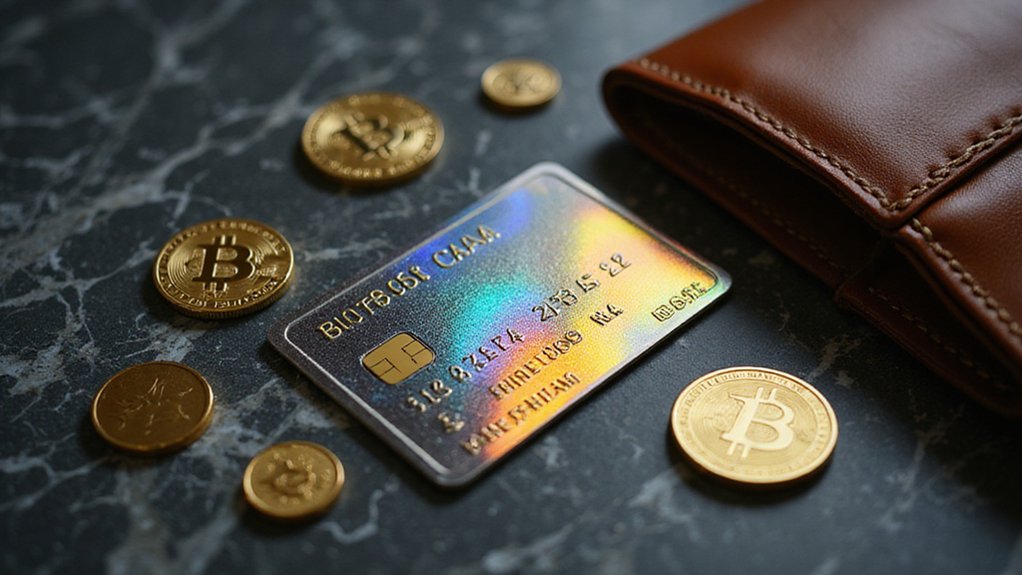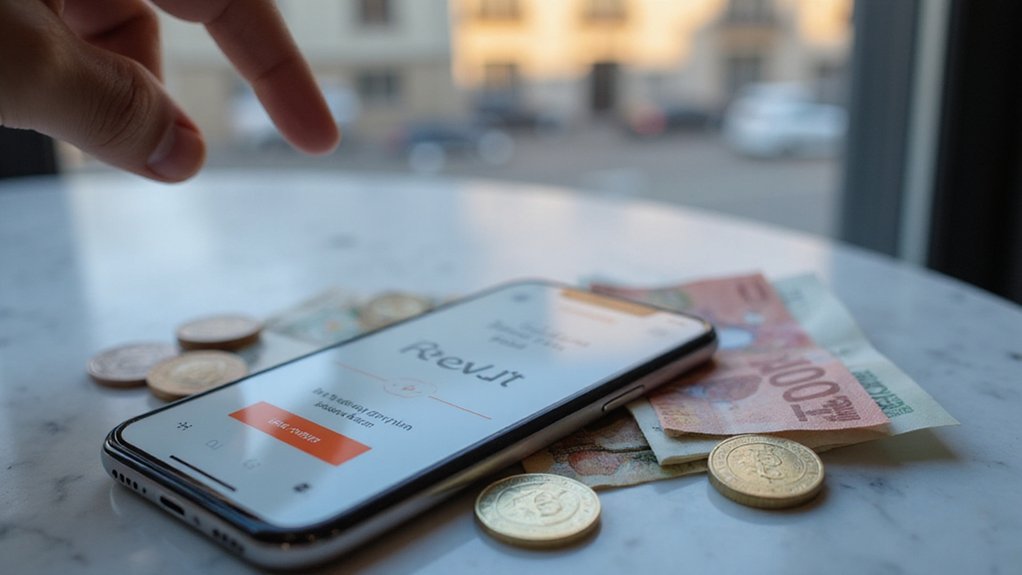While European consumers have spent decades fumbling for exact change at coffee shops and corner stores, a peculiar revolution has quietly emerged from the blockchain’s digital corridors—one where cryptocurrency cards now facilitate nearly half of all transactions under €10 across the continent.
The numbers reveal a fascinating behavioral shift: crypto card orders surged 15% throughout 2025, with 45% of transactions falling below the €10 threshold—a figure that would make traditional bankers question their understanding of customer preferences. The average crypto card transaction sits at €23.7, remarkably lower than traditional bank cards‘ €33.6 average, suggesting users have discovered an unexpected affinity for digital asset micro-spending.
Digital assets have quietly conquered the realm of spare change, transforming how Europeans approach their smallest daily purchases.
Perhaps most intriguing is the geographic irony—Europeans, traditionally cash-centric in their small-purchase habits, have embraced crypto cards with 40% of transactions occurring online, nearly doubling the Eurozone’s 21% average for conventional card payments. This digital-first mindset appears to contradict decades of established payment behaviors, yet the data suggests otherwise.
Grocery purchases dominate at 59% of crypto card transactions, followed by dining and bar expenses at 19%—mundane categories that hardly evoke visions of cryptocurrency’s revolutionary potential. Transportation payments round out the spending patterns, creating a portfolio that mirrors traditional consumer behavior with decidedly non-traditional infrastructure.
Stablecoins power 73% of these transactions, a pragmatic choice that sidesteps volatility concerns while maintaining blockchain benefits. This trend aligns with the broader expansion of stablecoin use cases across various financial applications, demonstrating their growing importance in everyday commerce. Bitcoin, Ether, Litecoin, and Solana handle the remainder, proving that even digital gold can purchase earthly groceries.
Traditional banks now face an unexpected challenge in their historically cash-dominated micro-payment territory. While maintaining supremacy in higher-value transactions, they’re witnessing steady erosion in small-purchase market share—a development that seemed improbable just years ago. The growing popularity stems from crypto cards offering near-instant transactions with significantly lower processing fees compared to conventional banking systems.
The implications extend beyond mere payment method substitution. Crypto cardholders report embracing blockchain technology for its perceived security and convenience advantages, suggesting a fundamental shift in financial trust mechanisms. Many users previously relied on cash for small transactions, making their digital asset adoption particularly remarkable.
Future projections indicate continued growth in crypto card adoption, with increased market share in micro-payments anticipated. Regulatory developments will likely influence trajectory, though current trends suggest this peculiar revolution shows little sign of reversing course.









